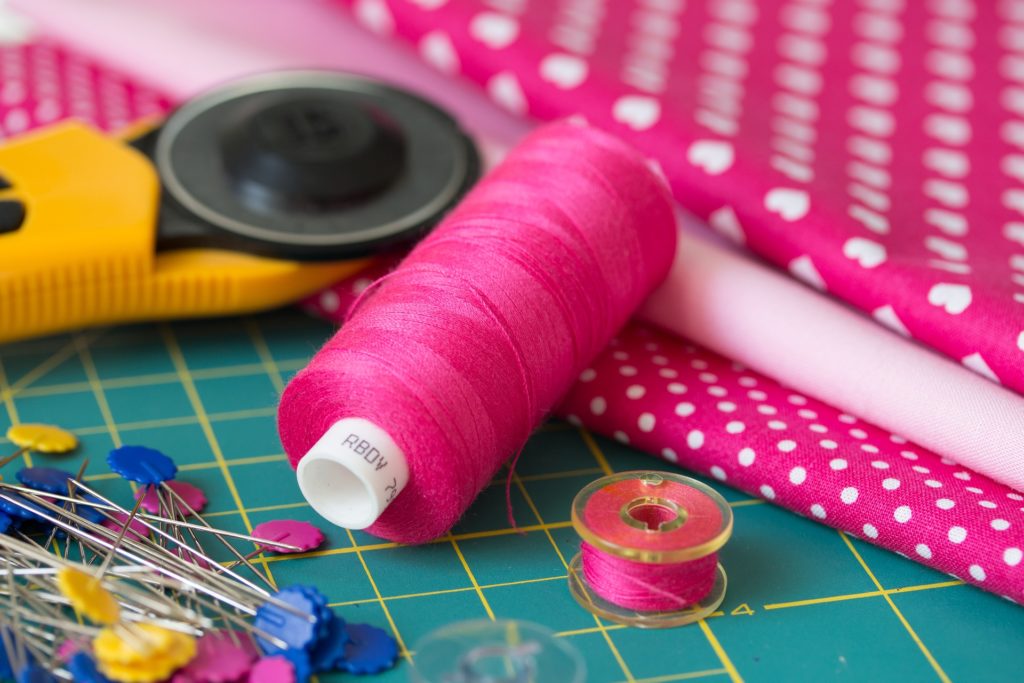Sewing requires skills, and sometimes our skills depend on the method we use. Sewing by hand may sound a bit too tiresome while using a sewing machine often takes more practice and expertise.
However, both methods have their pros and cons. In this article, we’re going to dig into those pros and cons.

Let’s start.
Sewing Manually
Hand stitching, or sewing by hand, offers you more precision in your projects. Let’s look at the advantages and disadvantages of sewing by hand.
The Advantages
- Beginner Friendly – hand sewing is easy to learn — all you need is a needle and thread. It’s also inexpensive. So, beginners will find hand stitching more preferable than starting with a sewing machine.
- Relaxing – the act of sewing by hand is notoriously relaxing. It’s a meditative process that calms you down and frees you from stress and anxiety.
- Portability – you can take your hand sewing kit anywhere you like and start sewing anytime. You can’t do that with a sewing machine.
- Precision – you can control your sewing project more when you do it by hand. So, hand sewing is great for more decorative stitches and repairs.
The Disadvantages
- Time Consuming – sewing manually takes more time than letting a machine do the job. You will spend hours and hours finishing a job that a machine can finish in a few seconds.
- Inconsistent – you may see your stitches are different in length and distance. With a sewing machine, you can be more consistent and accurate.
Using a Sewing Machine
Using a sewing machine is more complex than manual sewing, but it does offer a lot of advantages, especially if you plan to turn sewing into a career.
Different sewing machines also offer different features, so you have to be familiar with what a certain make and model does.
Here are the advantages and disadvantages.
The Advantages
- Fast – using a machine for your sewing projects undoubtedly consumes less time and energy. As long as you know how to operate the machine properly, you’ll finish up jobs in a matter of seconds.
- Convenient – after learning the proper operation of the machine, everything becomes more convenient across any kind of project.
- Consistent – using a sewing machine offers a high level of consistency — from the stitch length to the stitch width — that is nearly impossible to achieve in manual sewing.
The Disadvantages
- Expensive – new sewing machines are often expensive. If you want more advanced features, you also need to top up.
- Complex Operation – there is a learning curve. While it differs from person to person, it may take a while before you fully master how to operate a sewing machine properly.
- Less Precision – although you can achieve more professional-looking stitches, you also have to deal with imprecise placements.
Where to Use Manual Sewing and Sewing Machines
If you handle different types of sewing projects, you don’t have to choose one over the other. Where should you use manual sewing, and where should you use sewing machines?
You can use manual sewing for:
- Quick repairs
- Embroidery
- Cross stitch
- Patching up
- Invisible stitching
- Button and zippers
- Basting
Meanwhile, you can use sewing machines for:
- Sewing garments
- Quilting
- Buttonholes
Overall, hand sewing offers more control and precision than sewing with a machine, so it’s more useful for repairs and decorative stitches.
Meanwhile, sewing machines can help you save time and energy for huge projects. The downside is that machines are more complicated, and you must master the operation first before seeing better sewing results.
Your choice will depend mostly on what you plan to do and how much time you have in your hands. Either way, sewing is a great skill to learn and it often offers more rewards than downsides.

Leave A Comment